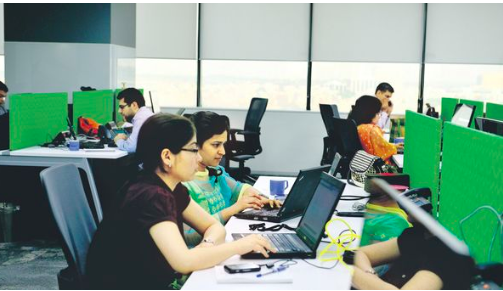It was always considered to be an issue that India perhaps hadn’t tackled rightly. At the same time, it was a necessary initiative that deserved more visibility particularly from the standpoint of leadership and corporate representation. Moreover, it was rightly considered an indicator of equality among both genders, too. Yet, despite there being no dearth in dialogue and idea exchange pertaining to this vital, very relevant cause, one hadn’t quite seen enough women representation in Indian companies.
And that really wasn’t too heartening, as it can never be, right? As a matter of fact, one has always wondered whether there could be a potential rise in women’s representation in the Indian companies, a sphere that demands leadership, dynamism, and whatnot!
Although it’s totally inscrutable to understand as to why, traditionally speaking, there hasn’t been a rise in the women’s representation in the Indian companies at a time where the narrative in the west is totally an opposite reality of much of what we observe in India and therefore, a constant cry-out for a change.

While it isn’t quite established as to whom would it concern having one gender missing out from the broader narrative (or what could perhaps be gained) but what can be suggested, without any hesitation is that having women in leadership roles; leading companies from key decision-making positions is an apposite way of thinking.
But guess what? The latest developments from the heart of the world’s largest democracy are perhaps pointing to a change in the ongoing narrative. It seems that the sun is shining on a key driver of the narrative, one that deserves to call the shots, as they say!
It appears that of late, there is an increase in the women’s representation in the Indian companies. The existing dynamics, hitherto familiar, and ever a constant are finally changing.
It appears that there’s much to laud about a change whose time, as revealed by the numbers, has finally come.
Media platforms recently carried a shining piece of development as evidenced by the following information:
- Gender diversity is higher in tier-I cities, with Bengaluru leading the chart, says study
- Representation of women in Indian companies increased from 21% five years ago to 30% now
It can be said that the prioritization of gender diversity and creating equal opportunities for both- men and women- are finally no longer imaginary companions of a time that beckons change.
According to the findings of the Zinnov-Intel Gender Diversity study in 2019, the following piece of data has emerged, one that would bring more optimism than ever before in the context of an increase in women’s representation in the Indian companies:
Representation of women in corporate India has increased from 21% five years ago to 30% now, with higher representation in non-technical roles (31%) over technical roles (26%), the study by management consulting firm Zinnov, in collaboration with Intel India, has shown. However, only 11% of senior leaders are women, compared with 20% in mid-level roles and 38% in junior roles, it said.

The number of women on company boards has increased from 5% in 2012 to 13% in 2018, according to the study, which evaluated 60 companies, including global capability centres (GCCs), technology service providers and startups, and analysed various organisational policies and practices.
The above change, it is reported, has been carried out as a result of pushing the mandate of having at least one woman in the company’s board of directors.
Moreover, there are other key inferences that could be drawn from the study that point to a change on the horizon, one that would leave those who dream of having a new idea- with a broad smile:
Large-firms, it is noted, have the highest gender representation at 33 percent, while the medium-ones are at 27 percent.
Interestingly, here’s some data that explains how gender diversity plays out differently in different cities:
Gender diversity is higher in tier-I cities at 31%, while it is around 25% in tier-II and tier-III cities. Bengaluru leads with 34%, followed by Mumbai with 33% and Pune 32%.


